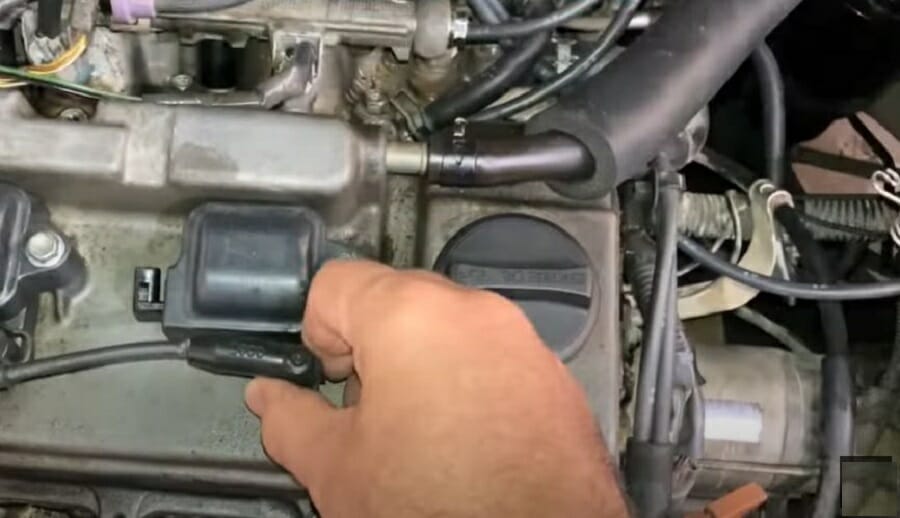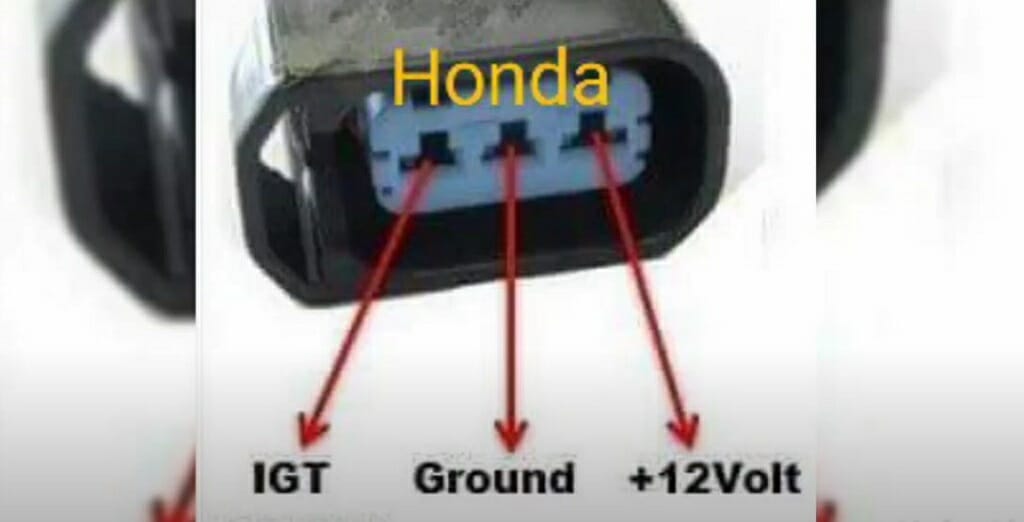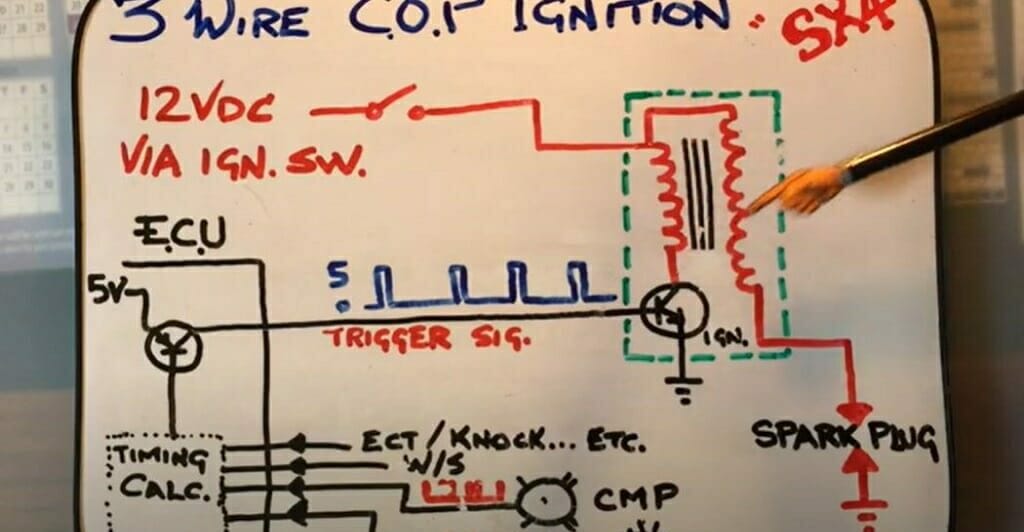3 Wire Ignition Coil Diagram (Full Guide)

Below, ill cover the 3-wire ignition coil with a diagram of its wiring and some useful information.
The purpose of an ignition coil is to produce high voltage for spark plugs. However, the ignition coil pins must be correctly connected to other electrical components.
Generally, a 3-wire ignition coil comes with a 12V, 5V reference, and ground pin. The 12V pin connects to the ignition switch, and the 5V reference pin connects to the ECU. Lastly, the ground pin connects to one of the vehicle’s common ground points.
Power, Signal, and Ground Pins of a 3 Wire Ignition Coil

Typically, a 3-wire ignition coil has three connections. The 12V pin can be recognized as the power connection. The battery’s positive terminal connects to the ignition switch, and the ignition switch then connects to the ignition coil.
The 5V reference pin is the triggering connection. This connection comes from the ECU and sends a signal to the ignition coil. This process triggers the ignition coil and sends the high voltage to the spark plugs.
Lastly, the ground pin makes the ground connection and protects the corresponding circuits.
How the 3-Wire Ignition Coil Works?

The main purpose of any ignition coil is pretty simple. It gets 12V voltage and releases a much higher voltage. This voltage value will be close to 50000V, given that the primary and secondary windings work perfectly. Here’s a simple explanation of how the primary and secondary windings work together to produce high voltage.
The ignition coil uses the relationship between magnetism and electricity to produce high voltages.
First, the electrical current flows through the primary winding, producing a magnetic field around the coil. Then, due to the disconnection of the contact breaker (open switch situation), this magnetic energy collapse toward the secondary winding. Finally, the secondary winding converts this energy to electricity.
Usually, the secondary winding has close to 20000 bindings. And the primary winding has around 200 to 300. This difference allows secondary winding to create high voltage.
The coil can create much higher voltage levels with a powerful magnetic field. So, the strength of the magnetic field matters, and it depends on two factors.
- The number of windings in the coil.
- The applying current
Where is the Spark Plug Wire Coil Located in Your Vehicle?
The ignition coil is usually located between the battery and the distributor. The distributor is responsible for delivering the high voltage from the ignition coil to the spark plugs.
How Can I Test a 3-Wire Ignition Coil?
There are three circuits in a 3-wire ignition coil: the power circuit, the ground circuit, and the signal-triggering circuit. You can test all three circuits with a digital multimeter.
For instance, the power circuit should show a voltage between 10-12V, and the ground circuit also should show 10-12V. You can perform both the power and ground circuit tests by setting your multimeter to DC volts.
However, testing the signal-triggering circuit is a little bit complicated. For this, you’ll need a digital multimeter that can measure frequencies. Then, set it up to measure Hz and take the reading for the signal-triggering circuit. The multimeter should display a reading between 30-60Hz.
Quick Tip: If you detect bad ignition coil symptoms, carry out the above tests. A properly working spark plug wire coil should pass all three above tests.
Difference Between the 3-Wire and 4-Wire Ignition Coils
Apart from the 3-pins and 4-pins difference, 3-wire and 4-wire ignition coils don’t differ much. However, the 4-wire coil’s 4th pin sends a signal to the ECU.
On the other hand, the 3-wire ignition coil doesn’t have such a feature and only receives the ECU’s triggering signal.
Take a look at some of our related articles below.
- How to wire an ignition coil diagram
- How to test ignition coil with multimeter
- How to test spark plug with multimeter
Video References
Automotive Diagnosis: Cars Repair & Training Guides
a to z car system
TheGibby3340
